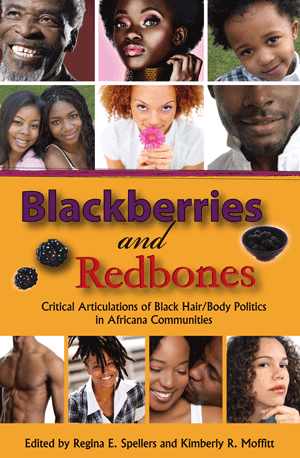Color Struck: How Race and Complexion Matter in the “Color-Blind” EraPosted in Anthologies, Anthropology, Books, Campus Life, Economics, History, Media Archive, Politics/Public Policy, Social Science, Social Work, United States, Women on 2018-12-03 03:34Z by Steven |
Color Struck: How Race and Complexion Matter in the “Color-Blind” Era
Sense Publishers
2017
218 pages
ISBN Paperback: 9789463511087
ISBN Hardcover: 9789463511094
ISBN E-Book: 9789463511100
Edited by:
Lori Latrice Martin, Associate Professor of Sociology
Louisiana State University
Hayward Derrick Horton, Professor of Sociology
State University of New York, Albany
Cedric Herring, Professor and Director of the Language, Literacy, and Culture (LLC)
University of Maryland, Baltimore County
Verna M. Keith, Professor of Sociology
Texas A&M University
Melvin Thomas, Associate Professor of Sociology
North Carolina State University
Skin color and skin tone has historically played a significant role in determining the life chances of African Americans and other people of color. It has also been important to our understanding of race and the processes of racialization. But what does the relationship between skin tone and stratification outcomes mean? Is skin tone correlated with stratification outcomes because people with darker complexions experience more discrimination than those of the same race with lighter complexions? Is skin tone differentiation a process that operates external to communities of color and is then imposed on people of color? Or, is skin tone discrimination an internally driven process that is actively aided and abetted by members of communities of color themselves? Color Struck provides answers to these questions. In addition, it addresses issues such as the relationship between skin tone and wealth inequality, anti-black sentiment and whiteness, Twitter culture, marriage outcomes and attitudes, gender, racial identity, civic engagement and politics at predominately White Institutions. Color Struck can be used as required reading for courses on race, ethnicity, religious studies, history, political science, education, mass communications, African and African American Studies, social work, and sociology.
Table of Contents
- Introduction / Lori Latrice Martin
- 1. Race, Skin Tone, and Wealth Inequality in America / Cedric Herring and Anthony Hynes
- 2. Mentions and Melanin: Exploring the Colorism Discourse and Twitter Culture / Sarah L. Webb and Petra A. Robinson
- 3. Beyond Black and White but Still in Color: Preliminary Findings of Skin Tone and Marriage Attitudes and Outcomes among African American Young Adults / Antoinette M. Landor
- 4. Connections or Color? Predicting Colorblindness among Blacks / Vanessa Gonlin
- 5. Black Body Politics in College: Deconstructing Colorism and Hairism toward Black Women’s Healing / Latasha N. Eley
- 6. Biracial Butterflies: 21st Century Racial Identity in Popular Culture / Paul Easterling
- 7. Confronting Colorism: An Examination into the Social and Psychological Aspects of Colorism / Jahaan Chandler
- 8. How Skin Tone Shapes Civic Engagement among Black Americans / Robert L. Reece and Aisha A. Upton
- 9. The Complexity of Color and the Religion of Whiteness / Stephen C. Finley and Lori Latrice Martin
- About the Contributors

